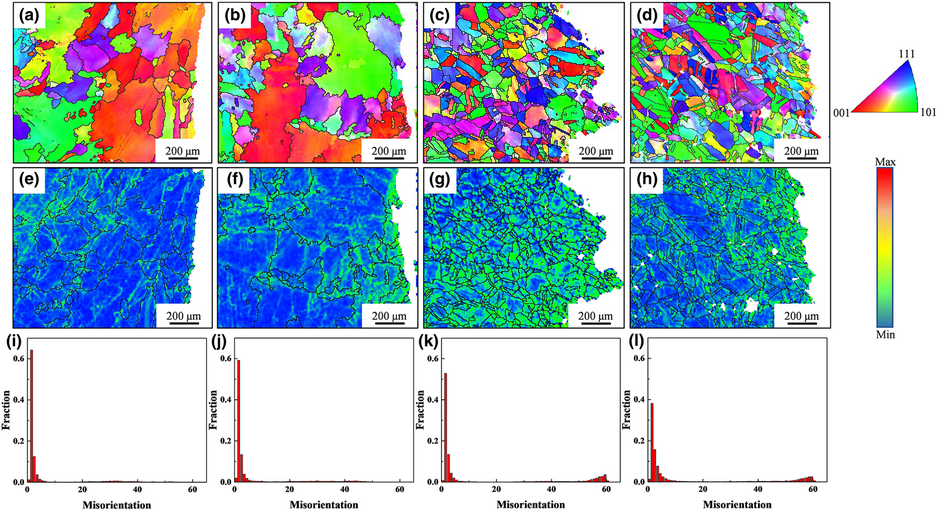Published online by Cambridge University Press: 24 June 2020

The fracture toughness of 617 Ni-based weld metal (WM) under different elevated temperatures was tested with a novel method and its fracture mechanism was investigated in this paper. It was found that the fracture toughness of WM was lower than that of base metal (BM) at the same temperature, which was mainly due to the coarse columnar structure, differences in misorientation, and precipitated phases. For both BM and WM, the fracture toughness was lower at elevated temperature due to decreased strength. Much more micro-voids caused by Ti(C, N) and M23C6 inside grains of BM could be observed adjacent to the crack path, which accounted for the dramatically decreased fracture toughness of BM at elevated temperature. In comparison, fewer micro-voids could be observed in WM due to the lack of those second particles. As a result, the J0.2 value and propagation path morphology both showed that the WM had more stable microstructure even though possessing lower toughness.
These authors contributed equally to this work.